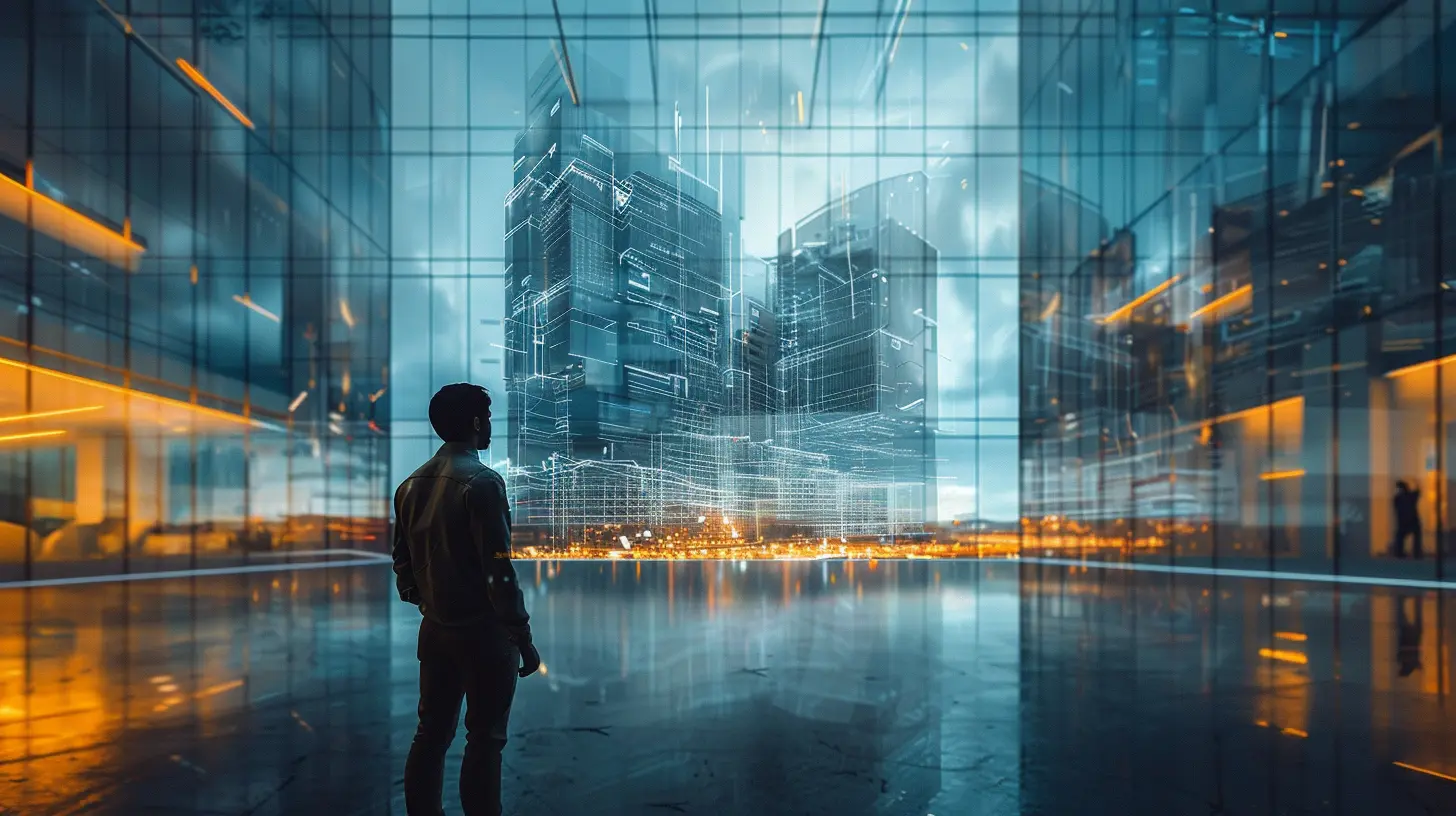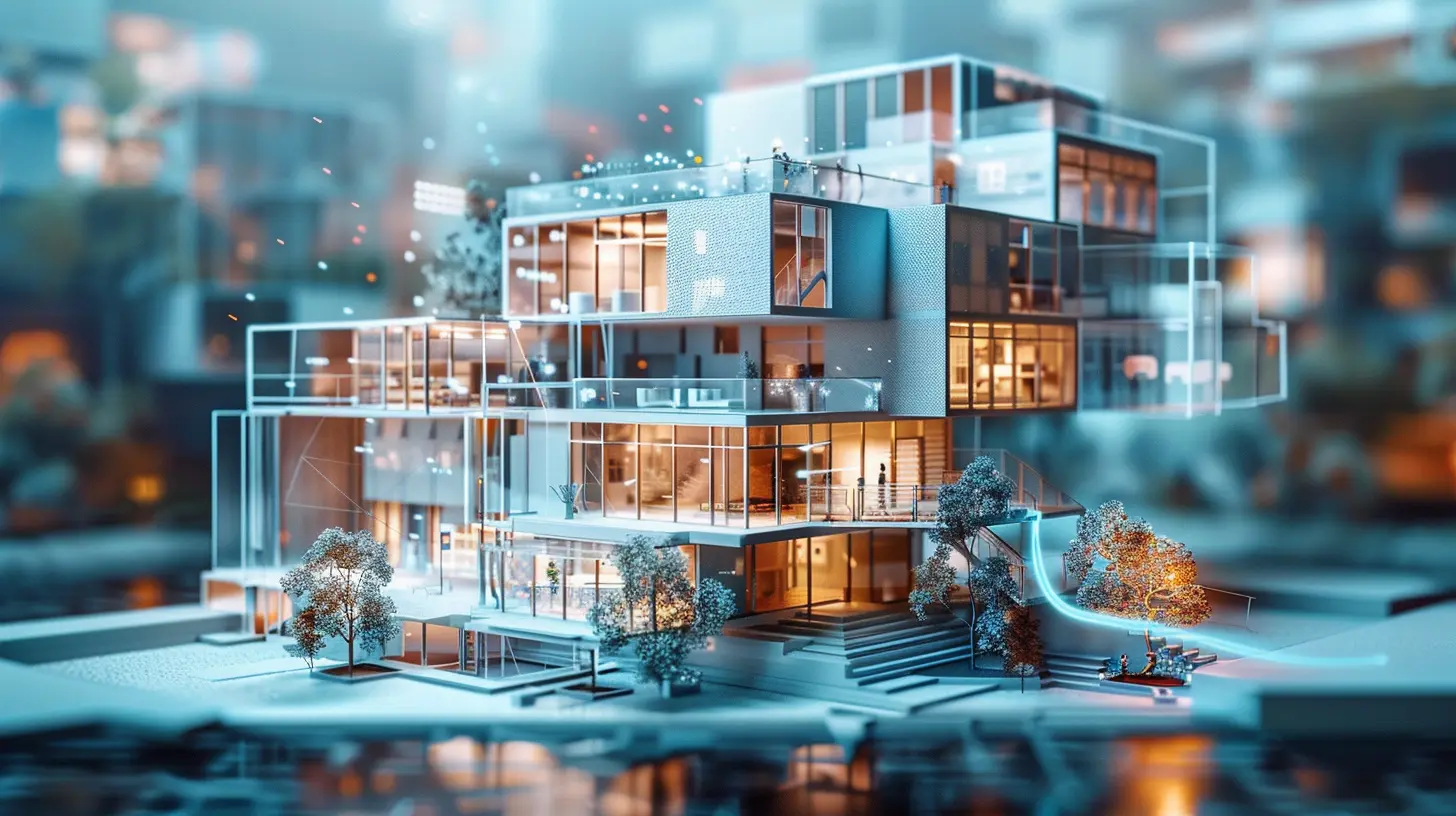Augmented Reality in Architecture: Designing Buildings in a Virtual World
30 May 2025
Technology has always played a crucial role in shaping architecture. From rudimentary sketches to advanced computer-aided design (CAD) software, architects have continuously adopted new tools to bring their visions to life. But now, with Augmented Reality (AR) stepping onto the scene, the way we design buildings is undergoing a radical transformation.
Imagine walking through a building before it’s even built, adjusting designs in real time, and collaborating on projects as if they were right in front of you. Sounds like something out of a sci-fi movie, right? Well, it’s happening right now! AR is changing the architecture game, making design more interactive, immersive, and efficient.
So, let’s dive into how AR is revolutionizing architecture and what it means for the future of building design. 
What is Augmented Reality (AR) in Architecture?
Before we get into the nitty-gritty, let’s quickly define Augmented Reality (AR). Simply put, AR overlays digital information—like 3D models or data—onto the real world through devices like smartphones, tablets, or AR glasses. Unlike Virtual Reality (VR), which completely immerses you in a digital environment, AR blends the physical and digital worlds seamlessly.In architecture, AR allows designers, engineers, and clients to visualize projects before they’re constructed. Whether it's placing a virtual building on an empty lot or modifying interior layouts in real time, AR is revolutionizing how architects work. 
How AR is Transforming Architecture
Let’s be real—traditional design methods, though effective, have their limitations. Floor plans and blueprints can only do so much to communicate a design. But AR? It bridges the gap between imagination and reality.1. Real-Time Visualization of Designs
One of the biggest challenges in architecture is translating paper-based plans into something tangible. AR eliminates this struggle by enabling real-time 3D visualization. With AR, architects and clients can walk through a digitally rendered version of a building, seeing details like:- The placement of doors and windows
- Room sizes and layouts
- Material finishes and lighting conditions
This means no more relying on abstract drawings—clients can actually experience the design before it becomes reality!
2. Enhancing Collaboration Among Teams
Architecture projects involve multiple stakeholders—architects, engineers, interior designers, and clients. Traditionally, miscommunications can lead to costly design changes. However, AR enables real-time collaboration, reducing misunderstandings and improving efficiency.For example, using AR headsets, teams can work together on the same digital model, making modifications instantly. This saves time, money, and effort while ensuring everyone is on the same page.
3. Improving Client Presentations and Approvals
Convincing a client about a design based on paper sketches can be tricky. But what if they could literally step inside their future building before it’s built? That’s where AR shines.Clients can:
- Explore a full-scale AR model of their project
- Change materials, colors, and layouts with a tap
- See exactly how the final structure will look and feel
This immersive experience builds confidence and trust, leading to faster approvals and fewer revisions.
4. Streamlining the Construction Process
Mistakes during construction can be expensive and time-consuming to fix. AR minimizes errors by allowing builders to overlay digital plans directly onto the construction site. This ensures that everything is aligned with precision, reducing mistakes and boosting efficiency.Workers can also use AR headsets to receive real-time instructions, eliminating the need for bulky blueprints. This type of hands-free guidance makes construction smoother and safer.
5. Augmented Reality for Interior Design and Space Planning
It’s not just buildings—AR is also revolutionizing interior design. Picture this: You’re designing a new office space, but instead of guessing how furniture will fit, you can place virtual objects in the room using AR. That means:- Trying out different furniture layouts before buying
- Experimenting with color schemes and lighting setups
- Ensuring the space is both functional and aesthetic
This interactive approach makes interior design more practical and engaging. 
The Technology Powering AR in Architecture
Of course, none of this would be possible without cutting-edge technology. Here are some of the driving forces behind AR in architecture:1. AR Software and Applications
Several AR-based applications allow architects to create and visualize designs, including:- Autodesk AR – Enhances CAD designs with AR functionality
- Fologram – Integrates 3D models into real-world environments
- BIM 360 – Provides real-time construction insights using AR
These tools bring designs to life, making the entire process more interactive and efficient.
2. AR Hardware
For AR to work, it needs the right hardware. Some of the most popular devices include:- Microsoft HoloLens – A mixed-reality headset that allows architects to manipulate 3D models
- Magic Leap – Offers immersive AR experiences for architectural visualization
- AR-enabled Tablets and Smartphones – More accessible tools for on-the-go AR modeling
As AR technology continues to evolve, we can expect even more innovative tools to emerge. 
Challenges and Limitations of AR in Architecture
While AR has massive potential, there are still a few challenges that need to be addressed:1. High Implementation Costs
Let’s be honest—AR technology isn’t cheap. High-end AR headsets and software can be expensive, making it harder for smaller firms to adopt. However, as technology advances, we can expect costs to decrease over time.2. Steep Learning Curve
Not every architect is a tech wizard. Learning how to use AR tools effectively can take time, and some professionals may resist adopting new technology. Proper training and user-friendly interfaces are crucial for wider adoption.3. Hardware Limitations
While AR headsets are impressive, they’re still bulky and expensive. Battery life and processing power also limit prolonged use. However, with continuous improvements, lighter and more affordable solutions will eventually dominate the market.The Future of AR in Architecture
Despite these challenges, the future of AR in architecture is incredibly promising. As technology advances, AR will become more accessible, efficient, and powerful. Here’s what we can expect in the near future:- AI-powered AR solutions for faster design modifications
- Holographic AR models that allow architects to manipulate designs with hand gestures
- More affordable AR devices, making the tech widely available
- AR-integrated smart cities, where buildings and spaces interact with their environments
The bottom line? Augmented Reality is here to stay, and it’s reshaping the way architects and designers bring ideas to life.
Final Thoughts
Augmented Reality is transforming architecture in unbelievable ways. From interactive 3D models to real-time collaboration, AR is making the design process more immersive, efficient, and engaging. While challenges like high costs and hardware limitations exist, the rapid advancement of AR technology suggests a bright future for the industry.Whether you’re an architect, a designer, or someone simply fascinated by the fusion of technology and creativity, one thing is clear—we’re stepping into a world where buildings can be designed, explored, and modified in a virtual space before they ever touch the ground. And honestly? That’s pretty amazing.
all images in this post were generated using AI tools
Category:
Augmented RealityAuthor:

Gabriel Sullivan
Discussion
rate this article
3 comments
Rowan Mullen
Blending imagination with reality—future buildings await!
June 16, 2025 at 3:06 AM

Gabriel Sullivan
Thank you! It’s exciting to see how augmented reality can transform architectural design by merging creativity with real-world possibilities.
Levi McLean
Building dreams virtually: architects now have a holographic toolbox!
June 3, 2025 at 11:08 AM

Gabriel Sullivan
Thank you! Holographic tools are truly transforming the design process, allowing architects to visualize and refine their dreams like never before.
Piper McLaurin
AR revolutionizes architecture, enhancing visualization and collaboration.
June 3, 2025 at 2:51 AM

Gabriel Sullivan
Thank you! AR indeed transforms architecture by providing immersive visualization and fostering collaboration among designers and stakeholders.



